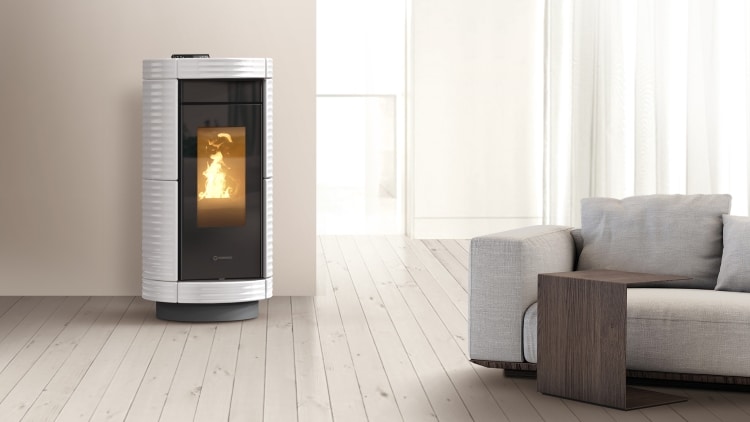Once you have decided to opt for pellets as a smart choice for heating your space, here comes the big question: which stove do I choose?
The first aspect to consider when you want to buy a pellet stove is the space you want to heat, in particular you need to evaluate:
- The size of the space to be heated to estimate the minimum power required
- the number of rooms to be heated
- The choice of heat distribution system (air or water)
- The need or not to integrate the pellet stove with an existing system
- The need or not to produce domestic hot water for bathroom and kitchen.
Once you have evaluated the above, you can move on to the choice of stove; in fact, there are several models.
- air pellet stove or insert : offers less power than the others, ranging in fact from 6 to 12 kW. Heat is distributed by radiation and by the introduction of hot air into the room. In the case of so-called "convection" models, heat is transferred exclusively by radiation due to a large radiant surface and the absence of room air ventilation.
The insert variant is the ideal solution for converting your old fireplace into a comfortable pellet stove while maintaining its appearance.
Air stoves are particularly suitable for heating a single room.
- ducted pellet stove or insert: its output ranges from 8 to 14 kW. In addition to the traditional heating of the room in which it is installed, it also allows the heat to spread through a system of pipes that conveys the hot air to other rooms in the house, even on several floors. It always finds a place on the lowest level of the house to allow heat to rise smoothly through the connecting pipes. Ducted inserts are also available.
- Pellet heating stove: its output ranges from 11 to 25 kW. It fits into the existing heating system, powering radiators and radiant panels, or producing domestic water for bathrooms and kitchens.
All the machines on the market differ from each other not only in efficiency and power but also in other features such as:
- tank capacity
- consumption
- autonomy
- possibility of programming the ignition and temperature, through a thermostat
- power consumption
- coating and design
- dimensions of the air intake
- flue gas outlet diameter.

